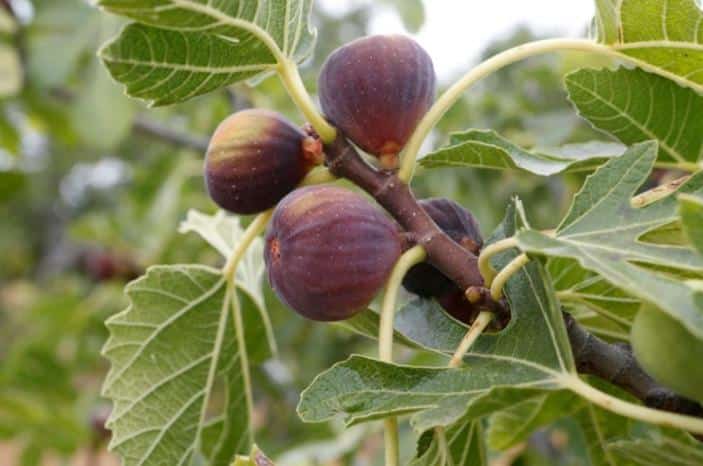Whether you cultivate them as a houseplant (ornamental), to provide shade in your parks, or for the fruits, you need to know their safety to your cats or other animals. Are these figs safe or not?
Figs or fig trees is a name given to over 850 shrubs, vines, woody trees, hemiepiphytes, or epiphytes species that belong to the genus Ficus under the family Moraceae (mulberry family).

The most popular species are common fig Ficus carica, a common source of fig fruits and weeping fig or Indian Rubber Plant (Ficus benjamina). The others are F. lyrata, F benghalensis, F. microcarpa, F. congesta, F. pumila, and F. macrophylla.
Nutrition and benefits
Fig fruits have 100g with 74 calories, 79% water, 19% carbohydrates (dietary fiber) with small to moderate amounts of various vitamins and minerals like thiamine, riboflavin, pantothenic acid, and vitamin B6. Vitamin K, calcium, manganese, potassium, magnesium, and so on.
When dried to 30% of water, their carbohydrate amount is about 64%, and a 100g will have 249 calories.
Besides nutrients, it has vital phytochemicals polyphenols such as chlorogenic, syringic or gallic acid, and rutin and catechin. At the same time, various amounts of anthocyanins vary depending on the color of the different cultivar.
Dietary fiber makes the fruits a good prebiotic that will promote healthy digestion and help manage diarrhea or constipation.
Studies in rats have shown that aqueous methanol extract of F. carica fruit may lower blood pressure (1). On the other hand, its leaf extract may help helps improve total cholesterol and triglyceride levels and good cholesterol (HDL) (2, 3).
Safety to cats?
Cats shouldn’t eat fig fruits or leaves or any part of the plant since the whitish to yellow sap they have ficin (ficain), and psoralen will cause low to moderate toxicity. Ripe fruits are not as toxic as such, and your cat may tolerate them well.
Ficin, a proteolytic enzyme, is present in the plant’s latex sap, including unripe fruits. It causes a burning sensation or irritation to the skin, oral cavity, eye, or respiratory system.
On the other hand, psoralen that belongs to the linear furanocoumarins family may cause nausea if taken orally or phytophotodermatitis (severe skin inflammation that may result in redness, itchiness, burns, and so on) when it comes in contact with their skin and then exposed to ultraviolet light.
Besides these symptoms, they cause, according to Wag! ficin and psoralen can “can attack the DNA of your cat’s cells.”
The FDA Database of Poisonous Plants has F. carica. However, the toxicity arises from mainly the plant sap with ripe fruits considered safe. Similarly, ASPCA lists Ficus benjamina as toxic to not only cats but also horses and dogs. These are just species. However, as mentioned, all mulberry families have a milk sap with ficin and psoralen.
Finally, for the fruit, the outer rind (skin and pulp surrounding it) has ficin, which will cause oral itchiness and a burning sensation, and this effect seems high in unripe ones.
Symptoms of toxicity
Some of the commonly reported symptoms of toxicity include the following
- Vomiting.
- Excessive drooling
- Shaking of the head.
- Diarrhea.
- Skin irritation as well as open, dermatitis, weeping sores.
If you suspect your feline has eaten fig fruits or the plant (felines at times nibble plants and grass) and has any of these symptoms, talk to your vet for further diagnosis and treatment.
Diagnosis and treatment
Don’t attempt to induce any vomiting. Let the experts handle it or tell you how to go about it. Diagnosis may include patient history, time of exposure, looking at the symptoms, blood test, heart and breathing rate measure, and so on.
Treatment will depend on the severity of the poisoning. It may include IV fluids to help stabilize your feline cat (control breathing or heart rate), gastrointestinal decontamination by inducing vomiting or neutralization using activated charcoal.
Fig Newton
Fig Newtons are Nabisco-trademarked pastry (biscuits or cookies) filled with a fig paste and the most popular fig rolls made by extrusion. Nabisco has others filled with apple cinnamon, strawberry, mixed berries, and raspberry.
Besides fig paste, they have whole wheat grain flour, sugar, enriched wheat flour (has vitamins B1, B2, niacin, reduced iron, and folic acid), salt, baking soda, soy lecithin, artificial flavor, soy, canola oil, pail oil, and so on.
While they don’t pose the risk of ficin (ficain) and psoralen since they are obtained from ripe fruits, they are high in sugar and very starchy, making them unsuitable for your feline pals.
A very tinny amount will not cause much harm to your feline pal. However, if possible, avoid them and try other healthy treats.
